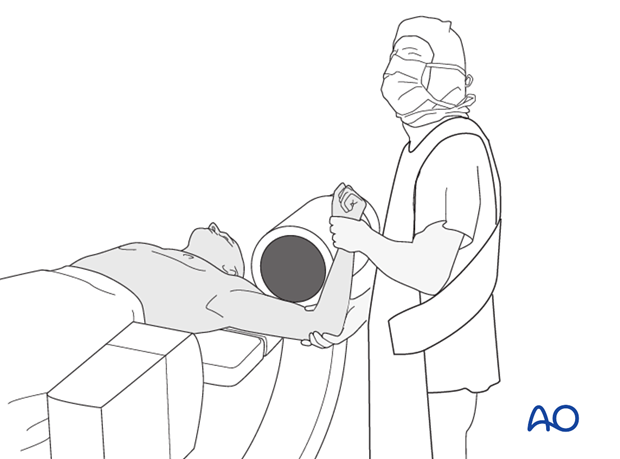Preparation/Positioning
1. General considerations
Proper patient positioning is crucial. Correct positioning permits all necessary arm and shoulder motions and allows necessary imaging in multiple planes. Errors in positioning might keep the surgeon from performing a successful operation.
Remember that the initially planned procedure may be modified. An unsuccessful closed reduction might require conversion to an open procedure. Perhaps, the initially intended fixation technique may need to be replaced by an alternative type of fixation or arthroplasty.
Preoperative planning should consider all phases of the intended and possible alternative procedures:
- instruments and implants
- anesthesia
- positioning
- draping
- imaging
- medications (especially preoperative intravenous antibiotics to cover typical skin bacteria)
- aftercare
- etc
Briefing and debriefing of the operative team before and after surgery improves the conduct of the procedure and reduces the risk of complications.
A variety of different operating tables and C-arm image intensifiers are available. They are more or less compatible, and their optimal use requires both planning and practice. The surgeon must be familiar with the equipment available in his/her operating room and ensure that both necessary positions and high-quality images can be achieved. Patients also vary, and both imaging and positioning for an intended procedure must be manageable given the size and possibly limited motion of the particular patient.
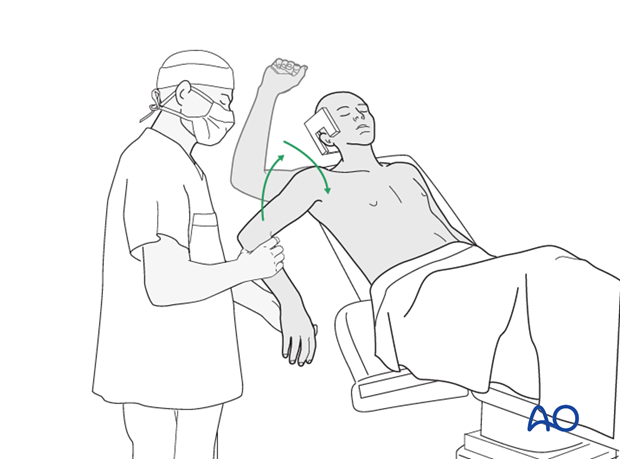
2. Recommended positions
The two most popular patient positions for operative treatment of proximal humeral fractures are the beach chair and the supine position.
Patient position depends upon the surgeon’s experience, the table, and the image intensifier. We have found that procedures with smaller incision are easier with a beach chair position.
The below list indicates the recommended position for each treatment option:
Closed reduction internal fixation/minimally plate osteosynthesis (all treatment options: screws, plates, nails, pins, etc)
- recommended: beach chair
- alternative: no other suitable alternative
Open reduction internal fixation (screw)
- recommended: beach chair
- alternative: supine
Open reduction internal fixation (plating)
- recommended: supine
- alternative: beach chair
Arthroplasty
- recommended: beach chair
- alternative: supine (if converted from ORIF)
3. Beach chair (semi-reclined supine) position
Advantage:
- arm movement in a wide range of motion possible
- easier conversion to arthroplasty
Disadvantage:
- difficult to get a true axial view without rotation of the arm
Position the patient with the upper body raised at an angle of 60°. Remove the shoulder pad on the injured side. The seat portion of the table should be tilted so the patient does not slide down the table and the hips are flexed. A special head rest allows access to the top of the shoulder.
It must be possible to view the humerus including the humeral head in two planes in the image intensifier. The fractured arm should be supported.
Note: Hyperextension and lateral inclination of the cervical spine should be avoided to prevent tension on the brachial plexus.
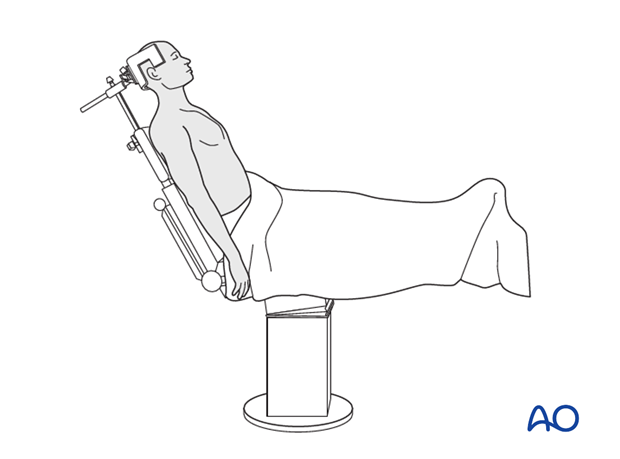
Image intensification
The image intensifier is usually placed parallel to the longitudinal axis of the patient, coming from a cranial direction. The central ray is aimed at the shoulder. Two orthogonal radiographic views are obtained by tilting the C-arm medially or laterally. The beam is directed from anterolateral to posteromedial (30-45°) or from anteromedial to posterolateral (30-45°).
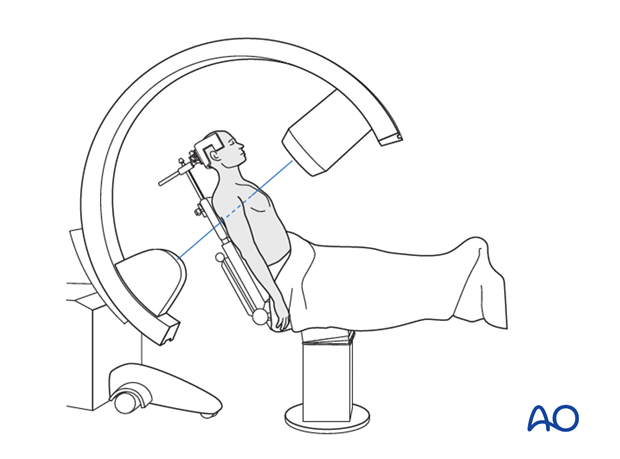
Special considerations
For arthroplasties and nailing, one should be able to extend and adduct the arm to allow best access into the medullary cavity.
Special sterile holding devices may be used to support the operative arm in a variety of modifiable positions.
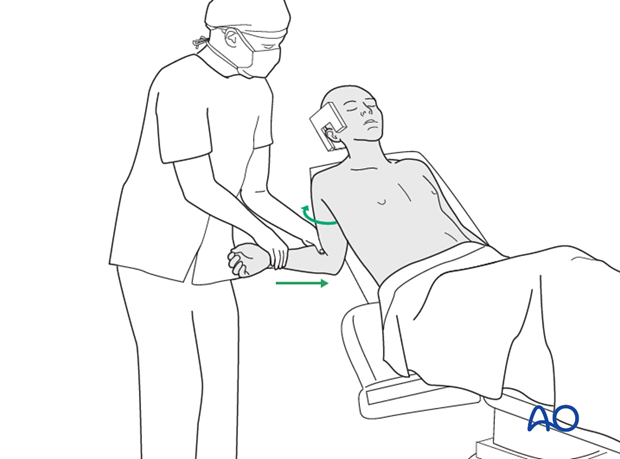
4. Supine position
Advantage:
- true axial view without movement of the fractured arm (crucial in unstable fracture situations) possible
Disadvantage:
- some limitation in motion during intraoperative manipulation
Use a regular OR table with two small shoulder supporting pads on the lateral side. Position the patient in a slightly oblique manner on the table such that the shoulder lies outside the table, on the radiolucent shoulder pads.
Using a completely radiolucent table top, the arm can rest on the table next to the patient without additional external support, while allowing imaging of the entire humerus. (The image intensifier is placed on the contralateral side of the patient and the “C” is redirected to allow anterolateral or anteromedial orientation of the central ray).
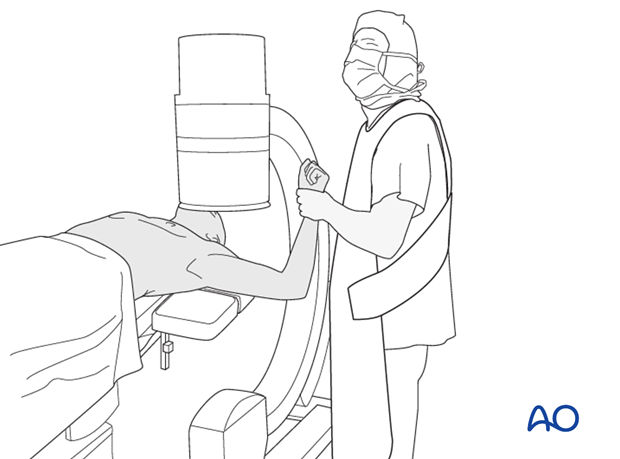
Views in two perpendicular planes (especially a true axial view) can be obtained without moving the arm just by moving the C-arm instead. This might be very helpful and/or necessary in unstable situations.
Make sure that the shoulder is sufficiently lateral on the table so that the entire proximal humerus can be visualized in this position.
Note: It is possible to convert to an arthroplasty when using this type of supine positioning. One just has to remove the shoulder pads to increase arm rotation and adduction.
